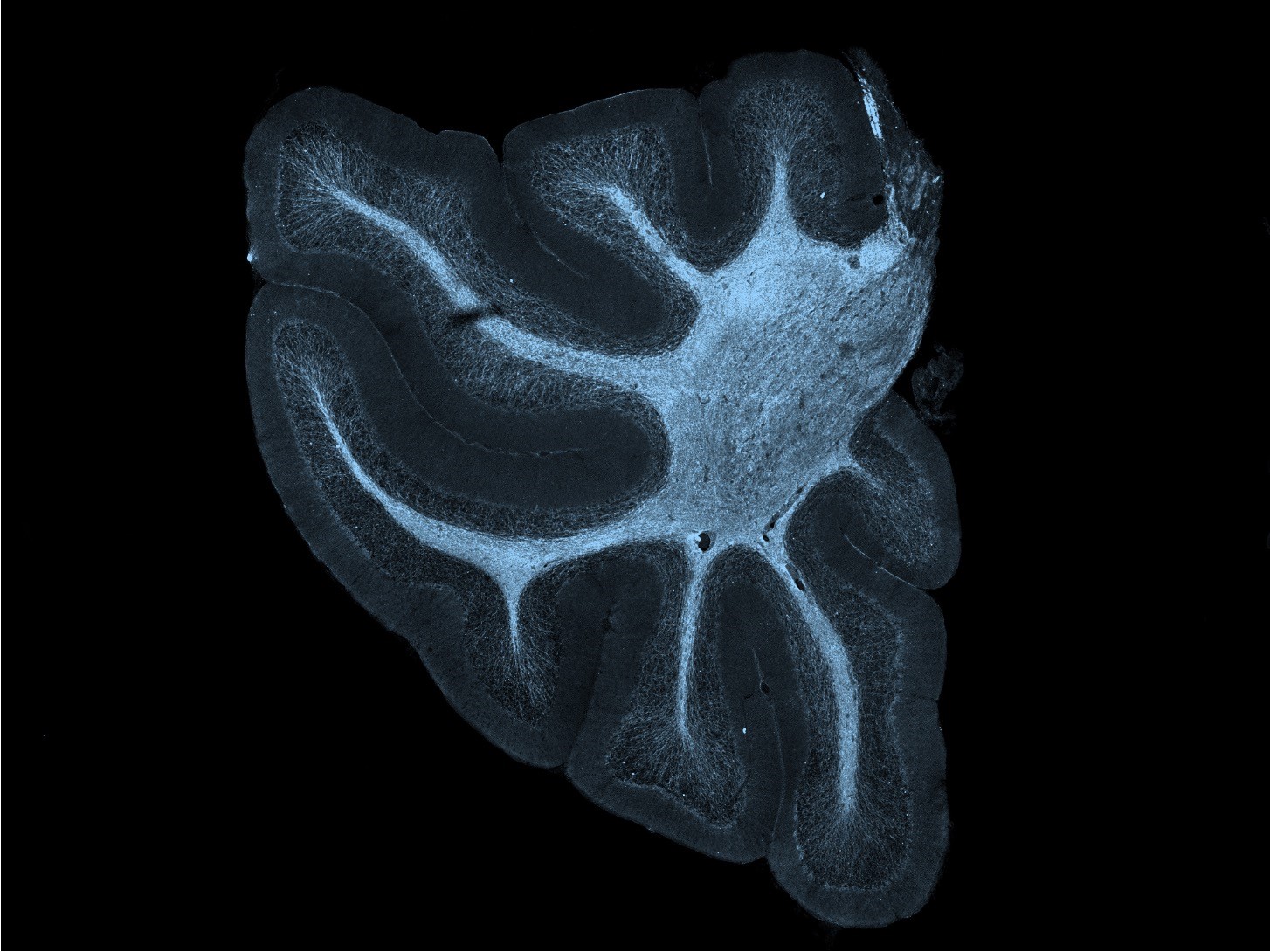Yale School of Medicine’s Department of Neuroscience has been busy. From cutting the ribbon at our new research hub to unearthing secrets of the brain, there was plenty to share and celebrate this year.
Here are the top 3 science stories of 2023:
The Most Read Stories of 2023
Yale researchers visualize “ultra-slow” axonal transport in a living organism.
Neurons rely on their cellular skeletons to protect their axons and prevent breakage. To carry out this task, most cytoskeletal proteins are synthesized in the cell body and transported along the axon. However, it can take weeks or months to travel the distance (upwards of a meter!) The speed of this axonal transport varies, but it is hard to measure.
In a study published in Developmental Cell, a Yale team visualized — for the first time in a living organism — the slow axonal transport of the cytoskeletal protein spectrin. Read more about their novel labeling strategy and its applications.
Yale Researchers Shed Light on the Progression of Neurodegeneration.
Spinocerebellar ataxia type 1 (SCA1) is a neurodegenerative disease that primarily impacts the cerebellum, a brain region involved in motor coordination. Over time, SCA1 patients lose control over their coordination and balance, resulting in muscle stiffness and weakness, speech and swallowing difficulties, and trouble when walking.
Traditionally, researchers only studied the cerebellum at the very end of the disease. A Yale team, however, went back in time to map the journey to this final stage.
In a recent study published in Neuron, Yale researchers identified the many gene expression changes that develop over the course of SCA1. See how they used single-nucleus RNA sequencing to observe these changes at the level of individual cells.
Study Uncovers Biological Mechanism Behind Loss of Smell in Parkinson’s Patients.
Parkinson’s disease is primarily considered a motor disorder, with its hallmark symptoms being tremors, stiffness, and slowness of movement. Less is known about its non-motor symptoms — even the most common ones. For example, a whopping 75 to 90 percent of Parkinson’s patients experience a diminished sense of smell.
Until now, understanding of this symptom was largely anecdotal. However, in a study published in Journal of Neuroscience, a Yale team uncovered the biological mechanism behind this anosmia. These findings could inspire development of an early diagnostic tool for the disease, since people often report loss of smell up to ten years before their diagnosis. Read more here.

